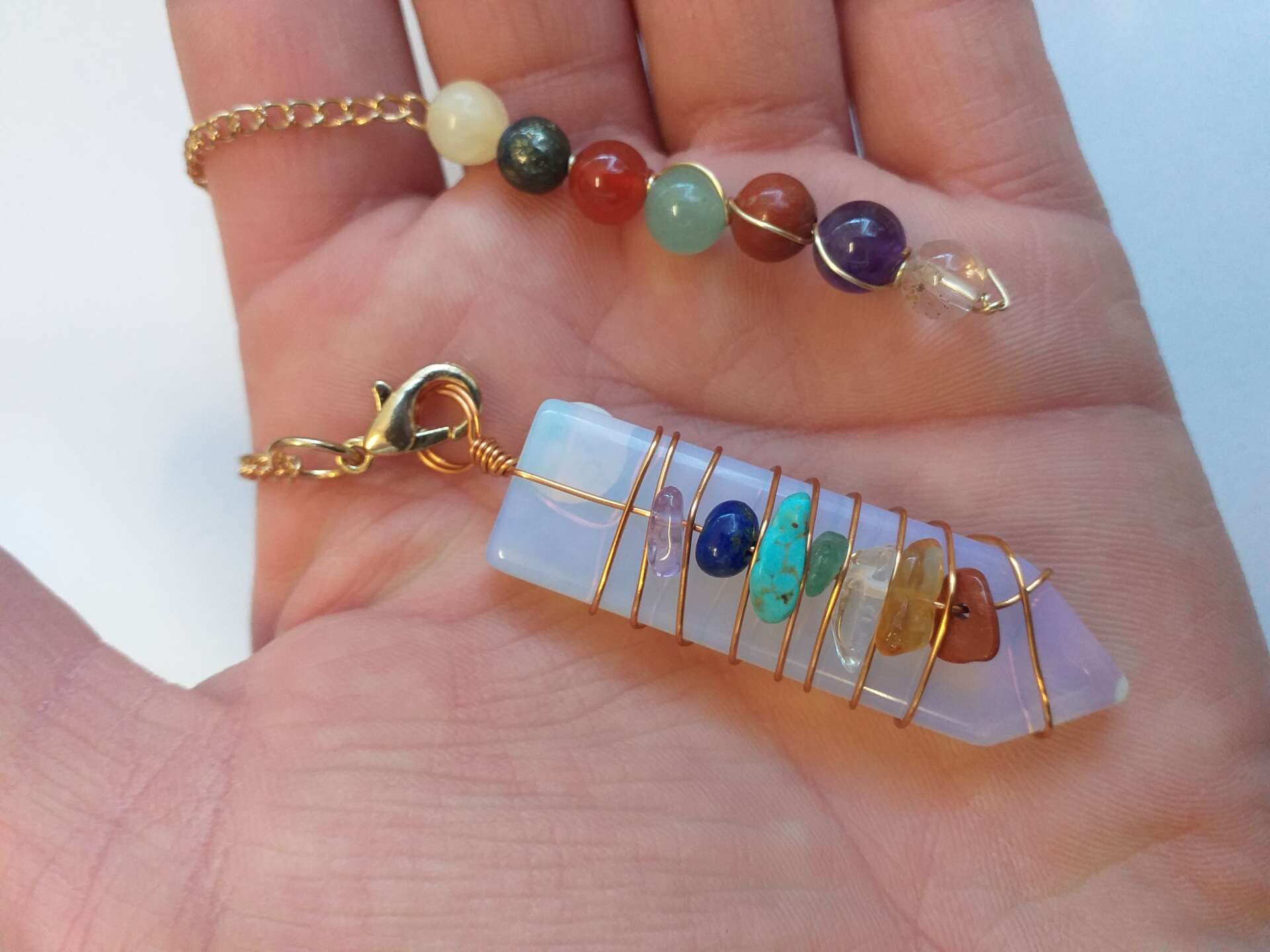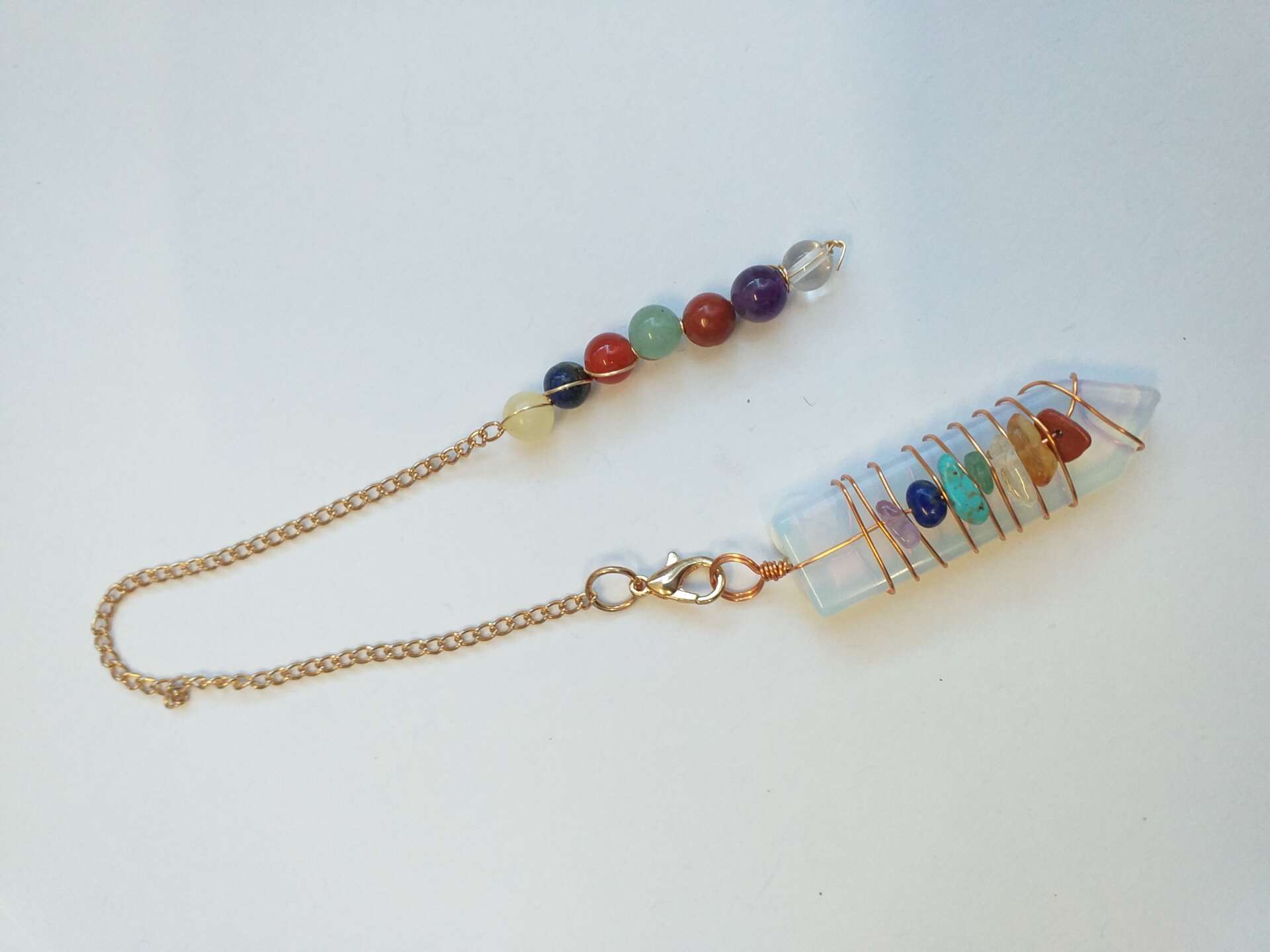Opalite Chakra Pendulum
Opalite is thought to help with emotional balance, calming anxiety and creating a sense of peace. It stimulates creativity and enhances communication skills. Opalite can be used to attract love and also strengthen relationships. A great stone to assist through times of change and transition, giving inner strength and insight. Also great for balancing and aligning the chakras and is associated with the third eye and heightening intuition.
A pendulum is a simple tool that can be used for divination, dowsing, and gaining insights into various aspects of your life. It consists of a weight, usually made from crystal, attached to a string or chain with a bead at the top of the chain for you to hold onto.
3 in stock
£22.00
3 in stock
Opalite is thought to help with emotional balance, calming anxiety and creating a sense of peace. It stimulates creativity and enhances communication skills. Opalite can be used to attract love and also strengthen relationships. A great stone to assist through times of change and transition, giving inner strength and insight. Also great for balancing and aligning the chakras and is associated with the third eye and heightening intuition.
A pendulum is a simple tool that can be used for divination, dowsing, and gaining insights into various aspects of your life. It consists of a weight, usually made from crystal, attached to a string or chain with a bead at the top of the chain for you to hold onto.
Pendulum Usage:
Before using your pendulum, take a few deep breaths and clear your mind of any distracting thoughts.
- Hold the Pendulum: Hold the top of the chain or string, usually there is a bead here to hold between your thumb and forefinger. Keep it steady and allow the pendulum to hang freely.
- Establish Baseline Movements: Ask the pendulum to show you its "yes", "no" and "unsure/maybe" responses. Simply ask your pendulum to show you a yes, no or maybe. You can confirm the pendulums movements by asking simple questions like, "Is my name [your name]?" Note the direction of movement for each response.
- Ask Questions: Start with simple, direct questions. Ask questions that have a clear "yes" or "no" answer.
- Interpreting Movements: Typically, a back-and-forth swing may indicate a "yes," while a side-to-side swing may indicate a "no." However, the directions can vary from person to person, so it's essential to establish your pendulum's specific movements.
- Practice Regularly: The more you practice with your pendulum, the more attuned you will become to its movements.


Reviews
There are no reviews yet.